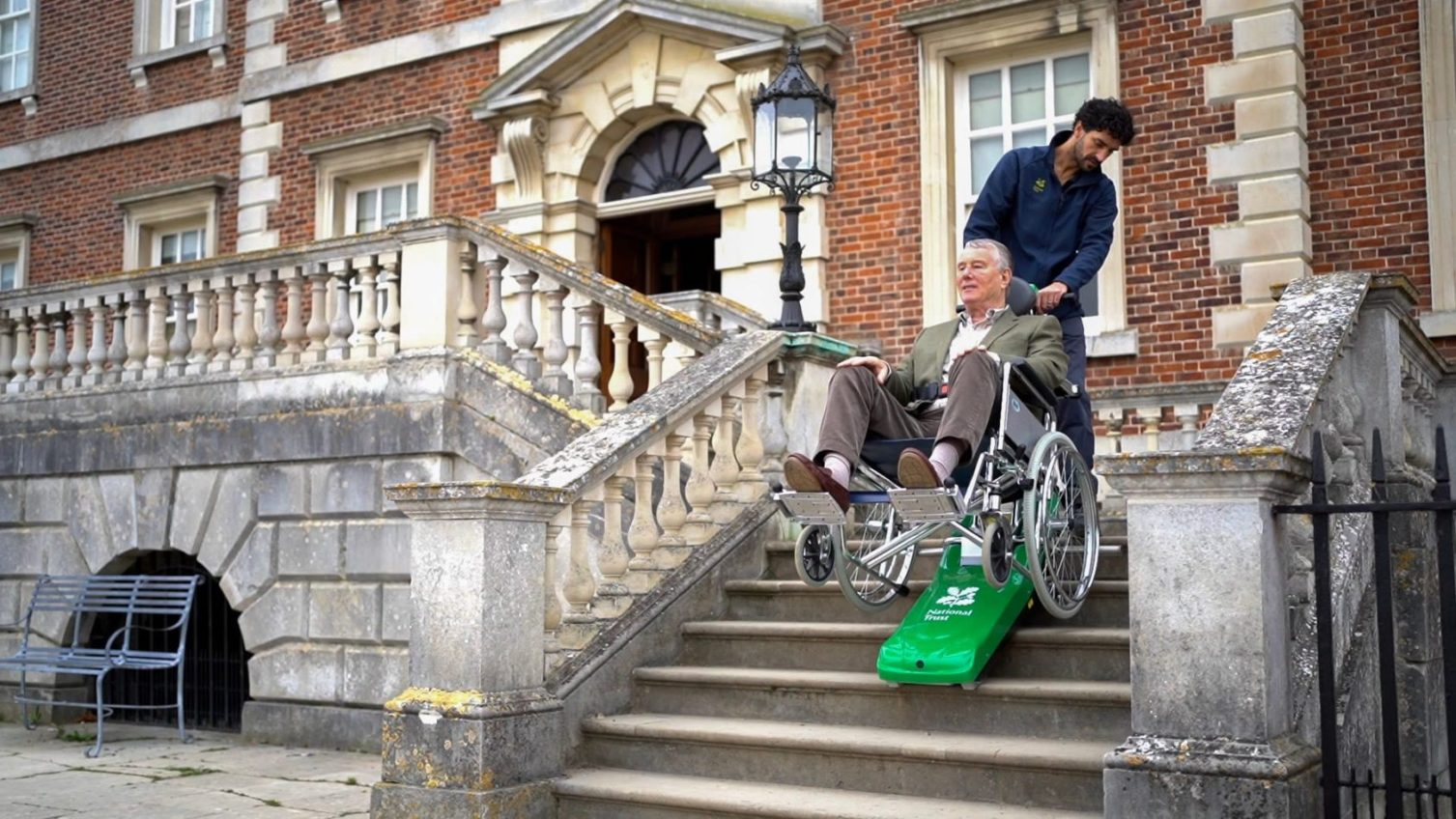
Can Stair Climbers Be A Solution For The Olympia Redevelopment?
The newly redeveloped Olympia Estate in London, a significant project aimed at transforming the area into a dynamic hub for …
Powered stair climbers are quietly transforming access across the UK—bridging the gap between aspiration and architecture. From Victorian terraces and village halls to galleries and stadiums, they offer a practical way to overcome steps where permanent lifts or ramps aren’t feasible. This article explains what powered stair climbers are, how they work, where they help most, and what organisations should consider when introducing them.
A powered stair climber is a mobile device that allows a wheelchair user—or a person seated in an integrated chair—to be transported safely up and down stairs under the control of a trained operator. Unlike fixed stairlifts, climbers require no structural changes to the building. Most models fall into three broad categories:
All types share key safety features: speed-limited motors, tilt control to keep the passenger level, emergency stop functions, and braking systems that lock to the stair when stationary.
Despite widespread progress on inclusive design, many UK buildings pre-date modern access standards. Installing a lift can be technically or financially prohibitive, particularly in heritage settings where altering staircases is restricted. Powered stair climbers provide a reasonable adjustment that can be deployed quickly, used on demand, and moved between locations. Their impact shows up in several ways:
You’ll find powered stair climbers across education, healthcare, local government, arts and heritage, hospitality, and housing. Typical scenarios include getting from street level to a first-floor function room, navigating short flights within older schools, reaching mezzanines in community centres, or accessing basement clinics. In the home, they can provide an interim or ongoing solution where a full through-floor lift isn’t suitable.
When introduced correctly, powered stair climbers are very safe. The essentials are:
Importantly, powered stair climbers can support resilience in incidents (e.g., lift failure), but they are not a like-for-like substitute for an evacuation plan. Life-safety arrangements must be risk-assessed separately and may involve evacuation chairs or other dedicated measures.
No single solution fits every staircase or person. Some tight spiral stairs, highly polished treads, or complex split-level arrangements may not be suitable. Landings need sufficient space to turn. Heavy bariatric loads require specific models. And because an operator is needed, organisations must plan staffing and booking systems to avoid delays.
A structured approach helps:
In the UK, organisations often purchase through public-sector frameworks or specialist suppliers that include assessment and training. For individuals, Disabled Facilities Grants (DFG) may contribute where the stair climber forms part of a wider adaptation plan, and Access to Work can support employed people who need help getting around their workplace. Charitable grants and VAT relief may apply in certain circumstances—speak to your local authority or supplier for guidance.
To show that a powered stair climber is making a difference, start collecting simple metrics:
These data points build the case for continuing investment and help fine-tune training and procedures.
Bottom line: Powered stair climbers are a practical, dignified, and cost-effective way to unlock stepped environments across the UK. They don’t replace the need for long-term inclusive design, but they offer a powerful bridge—today—so that heritage quirks, tight budgets, or complex layouts don’t stand in the way of full participation. With the right assessment, training, and culture of welcome, a stair climber can turn “sorry, there are steps” into “yes, of course—this way.”